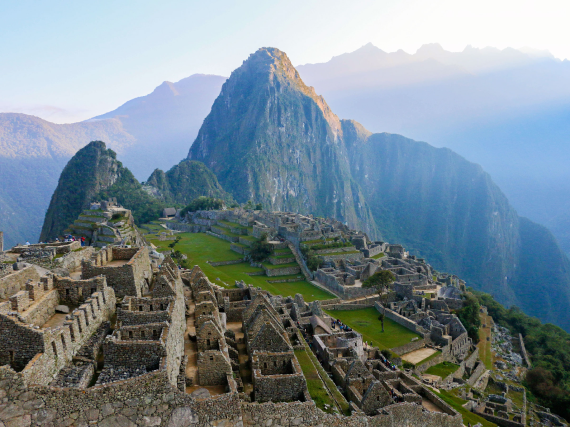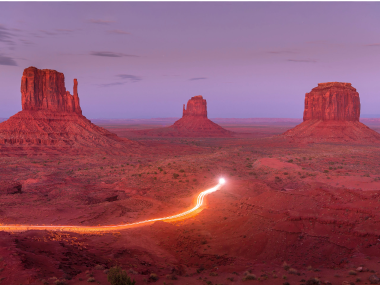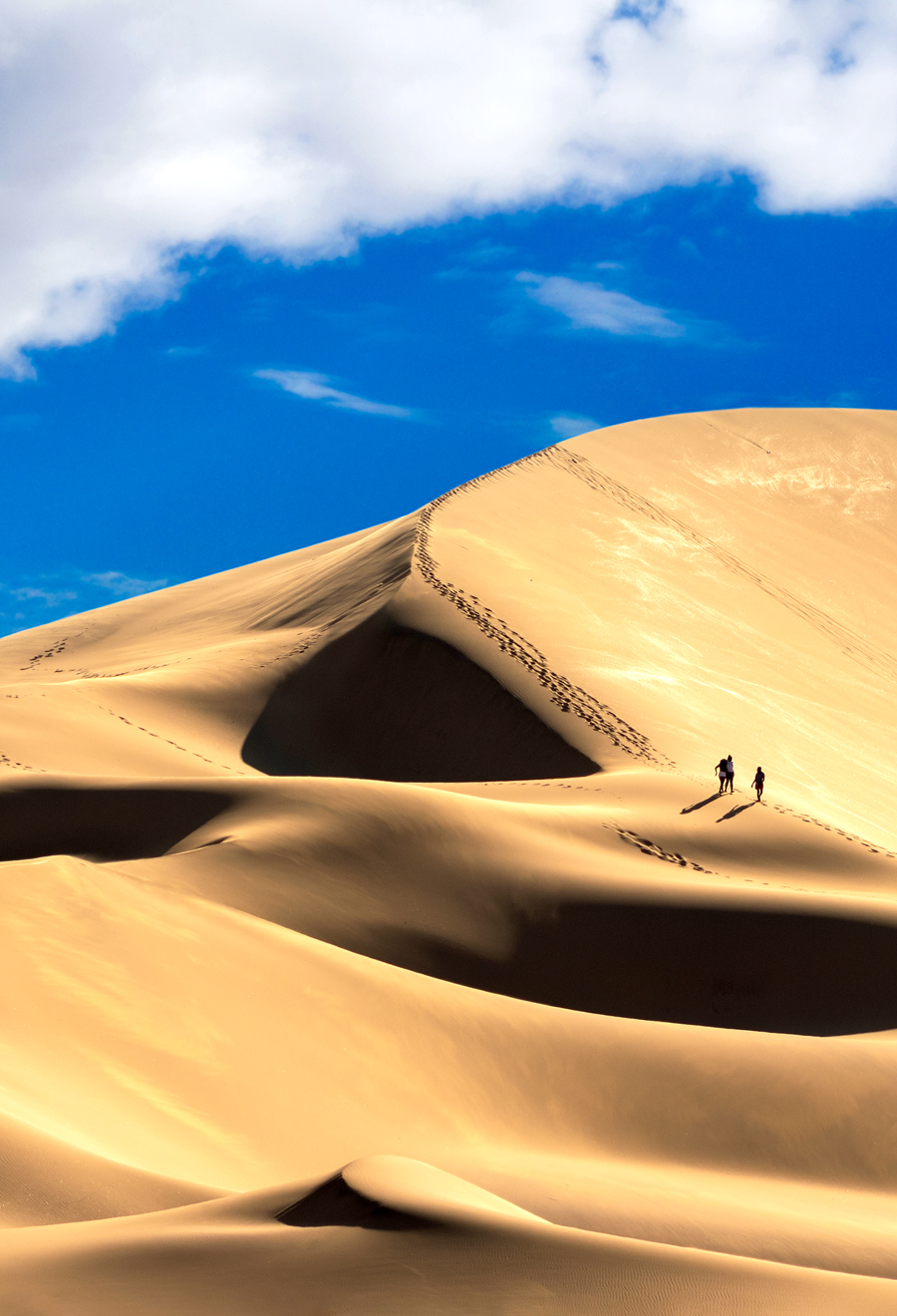A sand dune is a land formation naturally created by wind or water. Sand dunes can form quickly, grow, shrink, and move constantly with the elements — almost as if they’re living, breathing organisms. The biggest dunes on Earth can reach heights of more than 1,000 feet, with some standing as tall as big-city skyscrapers like the Empire State Building. Others inspire awe with the vibrancy of their color or the starkness of their landscape. These eight sand dunes, in particular, are among the most incredible around the world.
Star Dune – Colorado
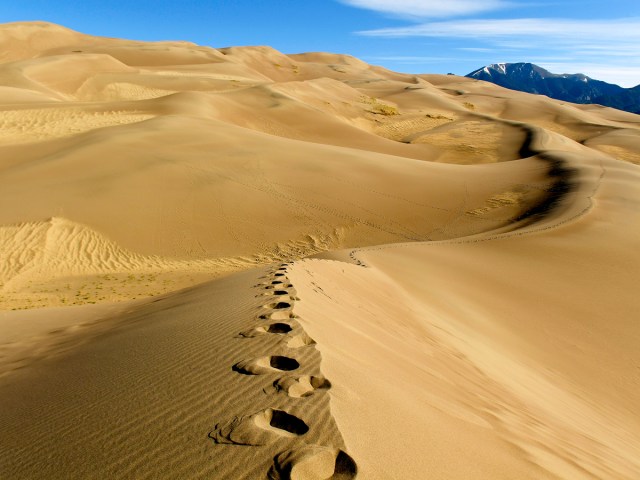
Standing in Great Sand Dunes National Park in southern Colorado, you might think you’re smack dab in the middle of the Sahara. The park boasts at least five sand dunes measuring more than 700 feet tall. The famed Star Dune towers 740 feet from base to summit and is tied with Hidden Dune as the tallest sand dune in North America. According to the National Park Service, the hike to the summit of Star Dune takes about six hours roundtrip.
The dunes were formed when the large lakes that once covered the region dried up, leaving a 30-square-mile dune field in their wake. Scientists don’t know exactly how old they are, but today the dunes are relatively stable, topped with just a few inches of dry, moveable sand.
Athabasca Sand Dunes – Canada

The northernmost sand dunes in the world, Canada’s Athabasca Sand Dunes span 62 miles in northern Saskatchewan. But this is no desert. The dunes stretch along the southern shore of Lake Athabasca, and the William River flows through the dunes. The mix of water, sand, and trees makes it one of the most unique places on Earth, as sand dunes usually only form in very arid areas.
Scientists estimate the Athabasca dunes were formed from sediment during the last glacial period about 8,000 to 9,000 years ago. The wind continues to move and shape them to this day. If you’re looking to visit, however, be prepared for a trek: The dunes, some of which reach as high as 100 feet, are only accessible by float plane or boat.
Erg Chebbi – Morocco
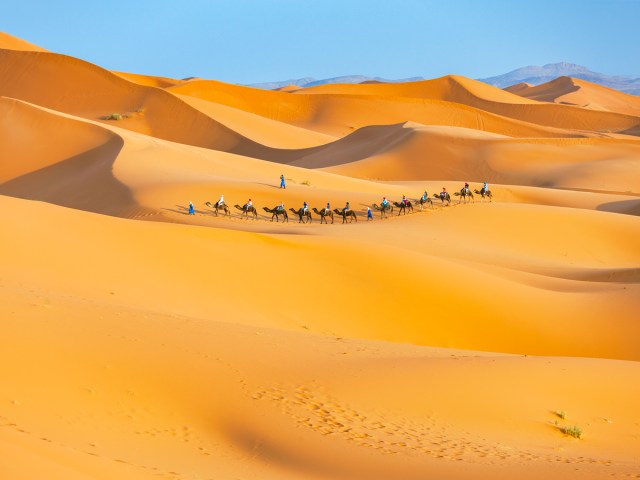
Morocco has many claims to fame, but perhaps none more well known than the epic ergs, or “sand seas,” that make up the pre-Saharan steppes along the country’s eastern border with Algeria. Erg Chebbi is especially notable for the sand’s burnt-orange color and the sweeping, oblong-shaped dunes that rise nearly 500 feet high.
Getting to Erg Chebbi is no small feat — it takes roughly 10 to 12 hours to drive from Marrakech, a popular jumping-off point for desert excursions, and then an additional hour or two to reach the dunes by camel. But once you’re there, you’ll feel lightyears away from the rest of the world. The vast dunes extend as far as the eye can see in every direction, creating a seemingly endless expanse of rippling, sandy waves.
White Sands – New Mexico
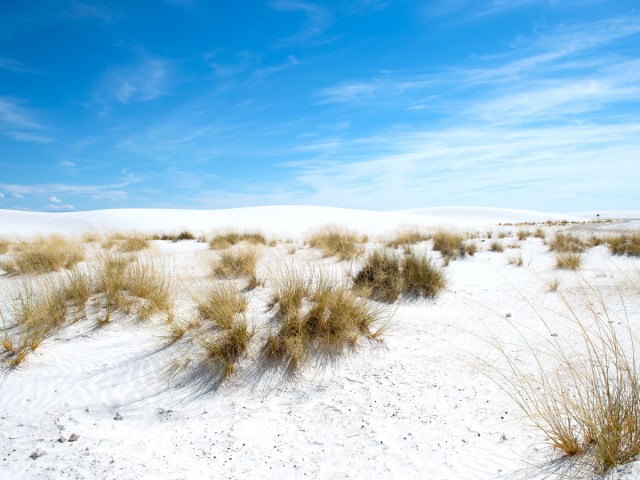
At first glance, the sprawling white dunes in the Tularosa Basin appear almost like rolling hills of fresh, powdery snow. But look closer and you’ll see they’re actually waves of fine white sand — the result of gypsum deposits left behind from an ancient sea that used to cover the area. Today, the dunes blanket more than 275 square miles of New Mexico’s desertscape, making White Sands the largest gypsum dunefield in the world.
Popular ways to experience the dunes include biking, hiking, sledding, horseback riding, and cruising along Dunes Drive, an eight-mile road that takes you through the heart of the dunefield. Much of the area and its fragile ecosystem are protected under White Sands National Park, which claims it as one of the world’s most spectacular natural wonders.
Mũi Né – Vietnam
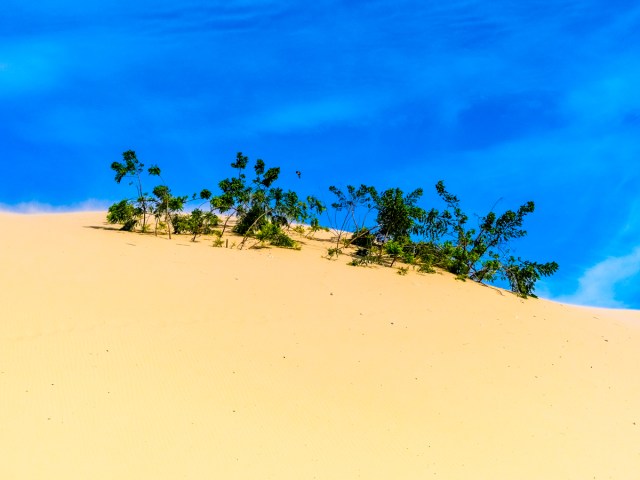
Southeast Asia is associated more with sandy beaches than with sand dunes, but the landscape surrounding the picturesque fishing village of Mũi Né breaks the mold. Located along the southern coast of Vietnam, in an area popular with windsurfers, Mũi Né offers an unexpected attraction — beautiful red and white sand dunes rising just a few miles outside the village.
Coastal dunes form when fine sand or sediment washes up along the shore and wind carries it inland, where it accumulates over several months or years. Eventually the sand piles up, ecosystems develop, and the dunes become a permanent fixture.
The most impressive such dunes in Mũi Né are the Red Sand Dunes (Đồi Hồng) and the White Sand Dunes (Đồi Cát Trắng). Appropriately named for their vibrant rust-colored sand, the Red Dunes strike a dazzling contrast against the bright blue sky, providing an incredible backdrop for photos.
Dune of Pilat – France
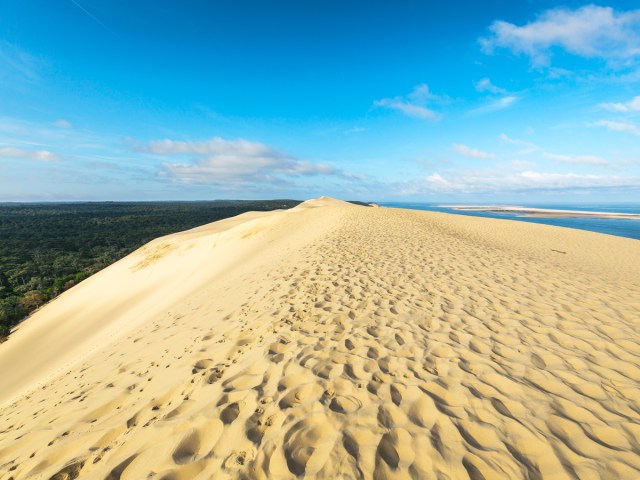
There are a million reasons to visit France — baguettes, wine, and architecture are a few of the most obvious, but perhaps surprisingly, the country also boasts the tallest sand dune in Europe. The Great Dune of Pilat looms large near Arcachon Bay along the southwestern coast of France, stretching nearly 2 miles long and reaching heights of up to 328 feet. Visitors can trudge up the sandy slopes or use a staircase that leads to the top of the dunes, where they’ll find uninterrupted views of the Atlantic and surrounding landscape.
Dune 7 – Namibia
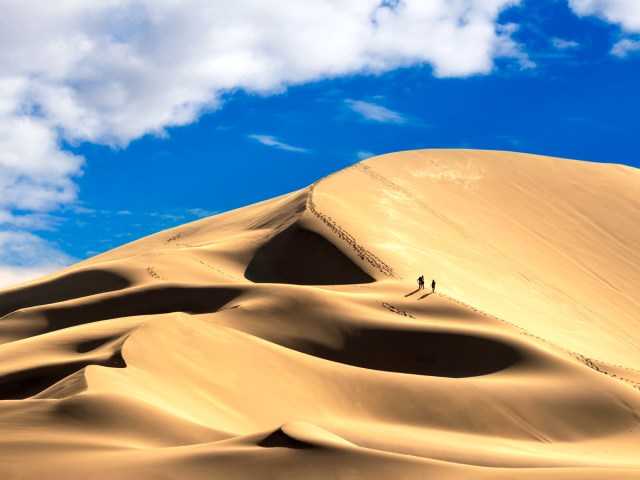
A list of incredible sand dunes wouldn’t be complete without Dune 7. Sometimes billed as the highest dune in the world (though other dunes also lay claim to that title), Dune 7 towers more than 1,200 feet above the Namib Desert in Namibia. It’s known as much for its windswept golden sand as it is for its thrilling four-wheeler tours. Dune 7 Adventures even offers sunset drinks on the dunes while you watch the last rays of the day cast shadows across the mountains of sand.
Empty Quarter – Arabian Peninsula

The Empty Quarter (also known as Rub’ al Khali) covers some 255,000 square miles of desert in the Middle East — including roughly a fourth of the entire Arabian Peninsula. It is the largest contiguous sand desert in the world. Around 80% of the dunes lie in Saudi Arabia, with other portions in Oman, the United Arab Emirates, and Yemen.
The sand sea continuously shifts with the wind like an ocean with the tides, making the ever-changing landscape seem otherworldly. In fact, it was used as a filming location for Star Wars: The Force Awakens. Of course, you won’t find any luggabeasts here, but it is home to some nomadic tribes and their camels.
More from our network
Daily Passport is part of Inbox Studio, which publishes content that uplifts, informs, and inspires.

